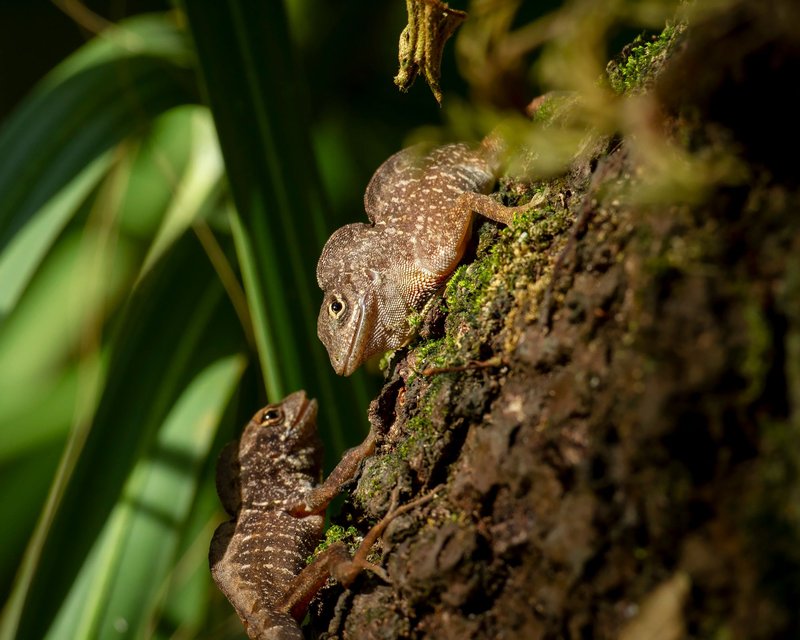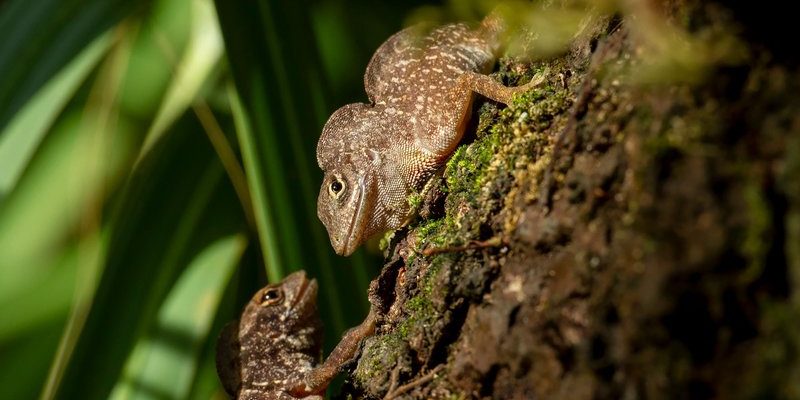
Anoles belong to the family Polychrotidae, and there are over 400 species of them! They are primarily found in the Caribbean, but you can also spot some in the southeastern United States. Just like reading a thrilling novel, understanding the evolutionary journey of the anole lizard can reveal exciting plot twists about how they have adapted to different challenges in their environments.
What Makes Anoles Unique?
You might be wondering, what sets anole lizards apart from other reptiles? For starters, they have a remarkable ability to change color. This isn’t just for show; it helps them regulate their temperature and blend into their surroundings to avoid predators. Picture yourself wearing a chameleon costume at a party; the better you blend in, the less likely you’ll be noticed!
Another fascinating feature of anoles is their dewlap—that little flap of skin under their neck. When males display their dewlaps, they’re not just flexing; they’re communicating with potential mates and rivals. It’s kind of like how we use body language to express ourselves, but with a colorful twist!
Anoles also boast incredible climbing skills thanks to specialized toe pads that give them a strong grip on various surfaces. This adaptation allows them to explore trees, fences, and even your porch, making them adept at hunting insects and escaping from danger.
Where Did Anoles Come From? A Brief History
The story of anole evolution begins around 40 million years ago. During this time, the Caribbean islands were emerging, and anoles started to spread across the land. They were one of the first groups of reptiles to colonize these islands, which were home to a variety of diverse habitats.
Through the process of adaptive radiation, anoles evolved into numerous species, each suited to its specific environment, much like how different formats of music resonate with different audiences. Some developed longer limbs for reaching high branches in trees, while others became smaller and better suited for living in low shrubbery.
This ability to adapt quickly to new habitats is crucial, especially in an ecosystem where conditions could change rapidly. The varying geographical landscapes of the Caribbean pushed anoles to become expert survivors, with their evolution driven by temperature, food availability, and competition.
How Evolution Shapes Anole Species
So, how do specific pressures shape the evolution of different anole species? Let’s take a look at a fascinating example: the Anolis sagrei, commonly known as the brown anole. Found predominantly in the Bahamas and the southeastern U.S., this little fellow is an excellent case study in adaptation. The actions of predators, such as birds, have influenced its physical traits. Brown anoles that can run faster or cling to surfaces better are more likely to survive and reproduce, passing those traits down to future generations.
On the flip side, the Anolis carolinensis, or the green anole, tends to thrive in trees. This species has developed a longer tail and a different climbing style to help it navigate the foliage efficiently. Imagine these two lizards on a race—one is built for speed on flat ground, while the other excels in the canopy.
These adaptations showcase the broader theme of evolution: that it’s not just about survival of the fittest but also about fitting into one’s specific ecological niche.
Convergent Evolution and Anole Adaptations
Here’s the thing: Anoles aren’t just evolving in isolation. Similar adaptations can appear in different species—this is called convergent evolution. Take, for instance, the anole species from different islands in the Caribbean. They might exhibit similar traits even though they’re not closely related. Think of it like different bands playing the same song in unique styles; the end result feels the same, but the influences shape the sound.
For example, both the green anole and the brown anole have developed adaptations for climbing, yet their environments and backgrounds differ. This convergence shows how certain environmental pressures can lead different species to evolve similar traits, highlighting just how flexible and inventive nature can be.
The Impact of Climate Change on Anole Evolution
You might be surprised to learn that climate change is influencing the evolution of anole lizards today. As temperatures rise, these lizards face new challenges, such as finding suitable habitats and food sources. This is pushing them to adapt more quickly than ever before.
For instance, if a section of forest becomes too hot for anoles, those capable of surviving in warmer conditions will thrive, while others may struggle. It’s like a race where the finish line keeps moving, forcing them to adapt at a swift pace.
Moreover, changes in habitat due to human activity can lead to isolation among anole populations, sparking the development of new traits in different groups. The ones that can adjust to urban environments, like those that can thrive in gardens and backyards, might become the dominant species in those areas.
Why Study Anoles? The Bigger Picture
Understanding the evolutionary history of the anole lizard isn’t just an academic exercise; it provides important insights into how species respond to their environments. Why does this matter? It gives us clues about biodiversity and the health of ecosystems.
Anoles serve as excellent models for studying evolution because they exhibit clear examples of adaptation and speciation. By observing how they’ve evolved, scientists can grasp how species might adapt to current and future challenges, including climate change.
Additionally, as we face global environmental shifts, studying these little lizards can help us predict which species might flourish or falter. So next time you see an anole sunbathing, remember, it’s not just catching rays; it’s also a living testament to millions of years of evolutionary history.
In conclusion, the evolutionary history of the anole lizard captivates anyone curious about nature’s wonders. These lizards have adapted remarkably to their surroundings, showcasing the resilience and ingenuity of life. So, whether you’re an avid nature lover or just someone who enjoys watching wildlife, take a moment to appreciate the unique story of these remarkable creatures. They’re not just lizards—they’re snapshots of evolution in motion!

